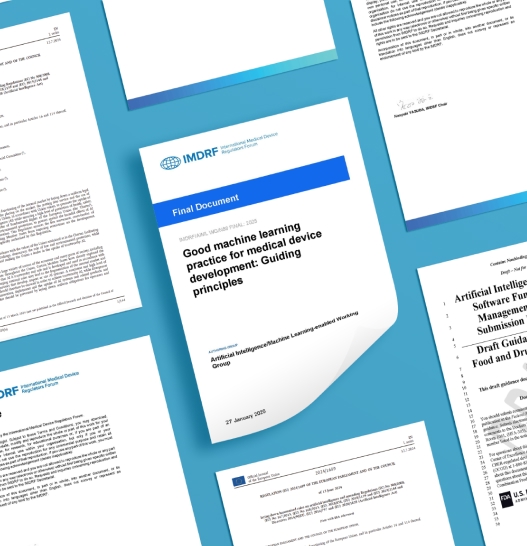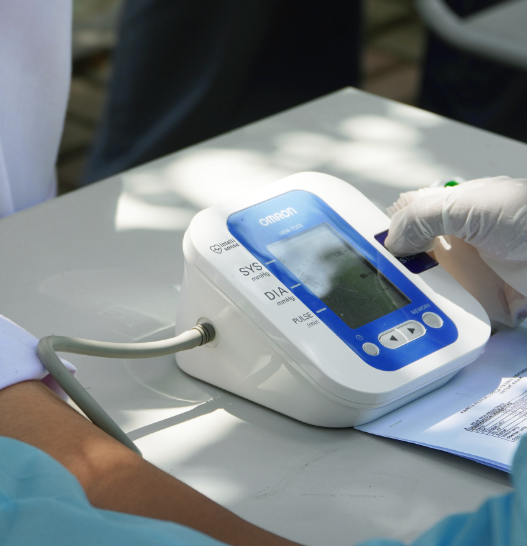If you want to get the clearance for a Corona self-test, you have to ask yourself some important questions. What are the usability requirements for your product? Which standards and regulations do you have to observe? How do you implement the requirements of the Medical Device Coordination Group (MDCG)? How do you test the usability of a Corona self-test and what do you have to consider during the usability tests? How do you set them up? How many participants do you need to get valid results? And how do you test with multiple participants while maintaining a safe hygiene concept?
This article will provide you with answers to these questions and clarity on everything you need to know about usability testing for your Corona self-test. We show you a straightforward procedure and tell you what you need to know in advance.
The current situation
Corona self-tests have become subject to very specific requirements for the product. These also include usability requirements. You must meet these requirements if you want to get the clearance for your medical product.
Since August 2021, the European Notified Bodies have jointly agreed on very clear requirements for the clearance of a Corona self-test and published them in a Guidance Document.
What are the special characteristics of Corona self-tests?
They are clarified as IVDs. To perform a Corona self-test, a sample must be taken from the human body. The tests therefore count as in vitro diagnostic devices, IVDs for short, and will be subject to the requirements of the IVDR, the In Vitro Diagnostic Device Regulation, starting in May 2022. The basic safety and performance requirements for the product are defined there. The appropriate MDCG Guidance document provides clear guidance on how these should be implemented. This also includes the proof of safe usability.
Thus, for the clearance of a Corona self-test, there is an obligation to perform usability engineering. You also have to go through a summative evaluation for the clearance of your product.
They are designed for use by laypersons. Accordingly, they must be safe for untrained users to use, understandable and interpreted without error.
Regulatory background for the usability of corona self-tests
The Medical Device Coordination Group provides a guidance document for manufacturers of rapid corona self-tests. It is called „Guidance on performance evaluation of SARS-CoV-2 in vitro diagnostic medical devices“ and contains some very important information for you.
Tables 4 and 6 are particularly interesting. These require:
- A minimum of 100 participants per test. So if you have a spit test and a nasal swab test, you need 100 participants each.
- These 100 participants must all be able to read the results of the test correctly and interpret them correctly. The following results are named, which must be correctly recognized by all participants: reactive, weakly reactive, non-reactive, not valid.
- Thus, a layperson must come to the same conclusions when reading test results as a person experienced in reading in vitro test results.
The recruiting
You need to find a substantial number of participants for your tests. In the end, you must be able to show that you have a mixed group that is representative. For example, it would not be representative to recruit only medical personnel to perform a lay test.
It is important that you are sure in advance for which groups the test should be cleared. For example, if it is also to be cleared for children, then you must also test them in sufficient numbers.
However, you should plan for a few more participants, because of course there can always be unexpected cancellations and dropouts.
If it is not possible for you in terms of time to recruit such a number of participants, you should seek external help. Specialized usability engineering agencies have often built up very large databases of potential participants who also take part in in-vitro studies.
In addition, you should consider early on that every participant needs his or her own participant ID, which will be assigned to his or her later test, including the questionnaire.
How to prepare properly
The hygiene concept. It is important that you draw up a hygiene concept in advance and plan its implementation in detail. Usability testing with such a large number of participants can only be implemented effectively and safely if you have sufficient space and equipment. Can you guarantee at all times that the required minimum distance between all persons can be maintained in your premises? Do you also have enough sanitizers, gloves, garbage bags, and masks ready?
Well thought-out questionnaires. Essential for the test are the right questionnaires. On the one hand, they must let the usability engineering researchers focus on the test observation, and on the other hand, you must make sure that there are fields for comments. These comments are important whenever a participant deviates from the successful execution of a usage step.
You also need to use scaled questions to make user satisfaction measurable. This allows you to assess and evaluate how easy or difficult it was for a user to complete certain steps.
The right Set-up
To test the usability of your Corona self-test, you need three things:
- Sufficient number of copies of your product. The test persons must test with the real product and the real instructions for use. This is the only way to show that your end product is safe and that the instructions are understandable, complete and clearly formulated. The packaging must also correspond to the end product.
- Camera and equipment. To be able to evaluate the tests properly, you should record everything on video. This part is especially important because anything that cannot be verified will not be considered. So, make sure that memory cards, cameras and chargers are properly prepared and sufficient.
- Everything necessary for compliance with the hygiene concept.. Ensure that there is sufficient sanitizer, masks, garbage bags and cleaning wipes in all your test laboratories.
Usability for Corona self-tests – How to test correctly
Usability for Corona quick tests is performed by observing real users using the product. This is followed by questions about the user experience and root cause analysis of possible use errors.
So how do you proceed step by step? You have recruited the necessary participants and the set-up is in place. Then you are ready to start.
The introduction to the test set-up is best done with a small interview guide, which ensures that no important information is forgotten. At the beginning there are also questions about age, gender and any previous experience with the self-responsible use of in-vitro diagnostics, such as blood glucose meters. At this point, you must also point out that your test is a clinical study due to the sample collection.
In the tests, participants are asked to use the Corona self-test only with the aid of the instructions of use in the package insert. A usability engineering researcher observes the individual steps of use and does not intervene to help. Only if the user is on the verge of doing something hazardous to health the researcher must intervene with a clear “Stop!”.
Unlike many other UX tests, participants are not asked to speak their thoughts aloud during use.
Then, while the participant is using the Corona self-test, the usability engineering researcher takes notes and makes a note of whenever a usage step is not performed as specified.
Since an individual user will receive only one test result on their self- test, prepare cards showing the other possible test results. Ask the user to interpret them. Can he correctly name which test is positive and which result is not valid? Each user must be able to interpret each possible test result without error.
After that, users must answer the scale questions. How easy did they find certain steps of use? Were the instructions included in the package always clear and concise? If the scale value is in the middle or the lower half of the satisfaction scale, then it must also be asked here why exactly this negative assessment occurred.
The questioning after use now refers to the cause of the incorrect use. If, for example, the wrong number of drops was dripped onto the test device, it must be asked why this happened.
You can read about our approach and how we managed to get over 20 Corona rapid tests through regulatory approval in 2021 over here.
And then? The evaluation
You should allow the necessary time for post-processing and evaluation of the tests. The rule of thumb: evaluating a test is likely to take twice as long as conducting it. With the sheer mass of user tests you need to do, you should be aware of the time required here as early as possible.
The clearance of your Covid19 self- test
The summative evaluation is the final evaluation of your product. It proves that the use of your product does not bear any unacceptable risks for patients, users or third parties.
If your product has passed the summative evaluation and can thus get the clearance, no more changes to the product and instructions may be made after that. Every change requires a new summative evaluation. A general procedure for summative evaluations and tips on how to best master them can be found here.
Conclusion
You now know how to prepare your usability testing and which requirements you have to face until you have achieved the clearance of your Corona self-test from a usability point of view.
Usability tests for Covid self-tests are mandatory for their clearance. Legal requirements, the right testing method and a good hygiene concept for the tests are basic prerequisites for successful implementation. Acquiring large numbers of test users can be particularly challenging. Here you need possibilities for recruitment, the time necessary and sufficient personnel for your testing.
What is your specific case? We would be happy to discuss your requirements together. To do this, you can simply get in touch using our contact form. Feel free to write feedback on this post in the comments. We look forward to hearing from you.



